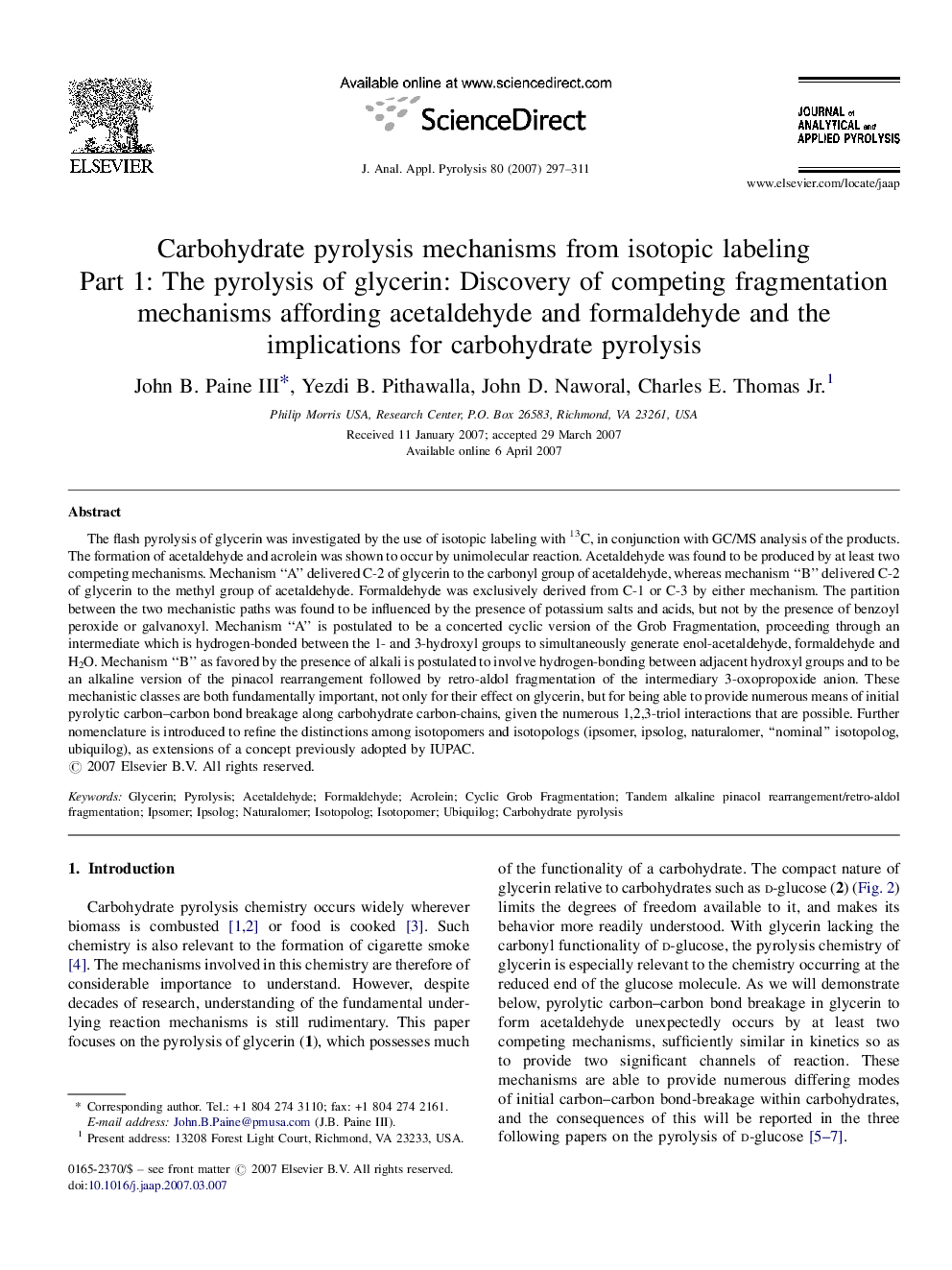| Article ID | Journal | Published Year | Pages | File Type |
|---|---|---|---|---|
| 1197727 | Journal of Analytical and Applied Pyrolysis | 2007 | 15 Pages |
The flash pyrolysis of glycerin was investigated by the use of isotopic labeling with 13C, in conjunction with GC/MS analysis of the products. The formation of acetaldehyde and acrolein was shown to occur by unimolecular reaction. Acetaldehyde was found to be produced by at least two competing mechanisms. Mechanism “A” delivered C-2 of glycerin to the carbonyl group of acetaldehyde, whereas mechanism “B” delivered C-2 of glycerin to the methyl group of acetaldehyde. Formaldehyde was exclusively derived from C-1 or C-3 by either mechanism. The partition between the two mechanistic paths was found to be influenced by the presence of potassium salts and acids, but not by the presence of benzoyl peroxide or galvanoxyl. Mechanism “A” is postulated to be a concerted cyclic version of the Grob Fragmentation, proceeding through an intermediate which is hydrogen-bonded between the 1- and 3-hydroxyl groups to simultaneously generate enol-acetaldehyde, formaldehyde and H2O. Mechanism “B” as favored by the presence of alkali is postulated to involve hydrogen-bonding between adjacent hydroxyl groups and to be an alkaline version of the pinacol rearrangement followed by retro-aldol fragmentation of the intermediary 3-oxopropoxide anion. These mechanistic classes are both fundamentally important, not only for their effect on glycerin, but for being able to provide numerous means of initial pyrolytic carbon–carbon bond breakage along carbohydrate carbon-chains, given the numerous 1,2,3-triol interactions that are possible. Further nomenclature is introduced to refine the distinctions among isotopomers and isotopologs (ipsomer, ipsolog, naturalomer, “nominal” isotopolog, ubiquilog), as extensions of a concept previously adopted by IUPAC.
